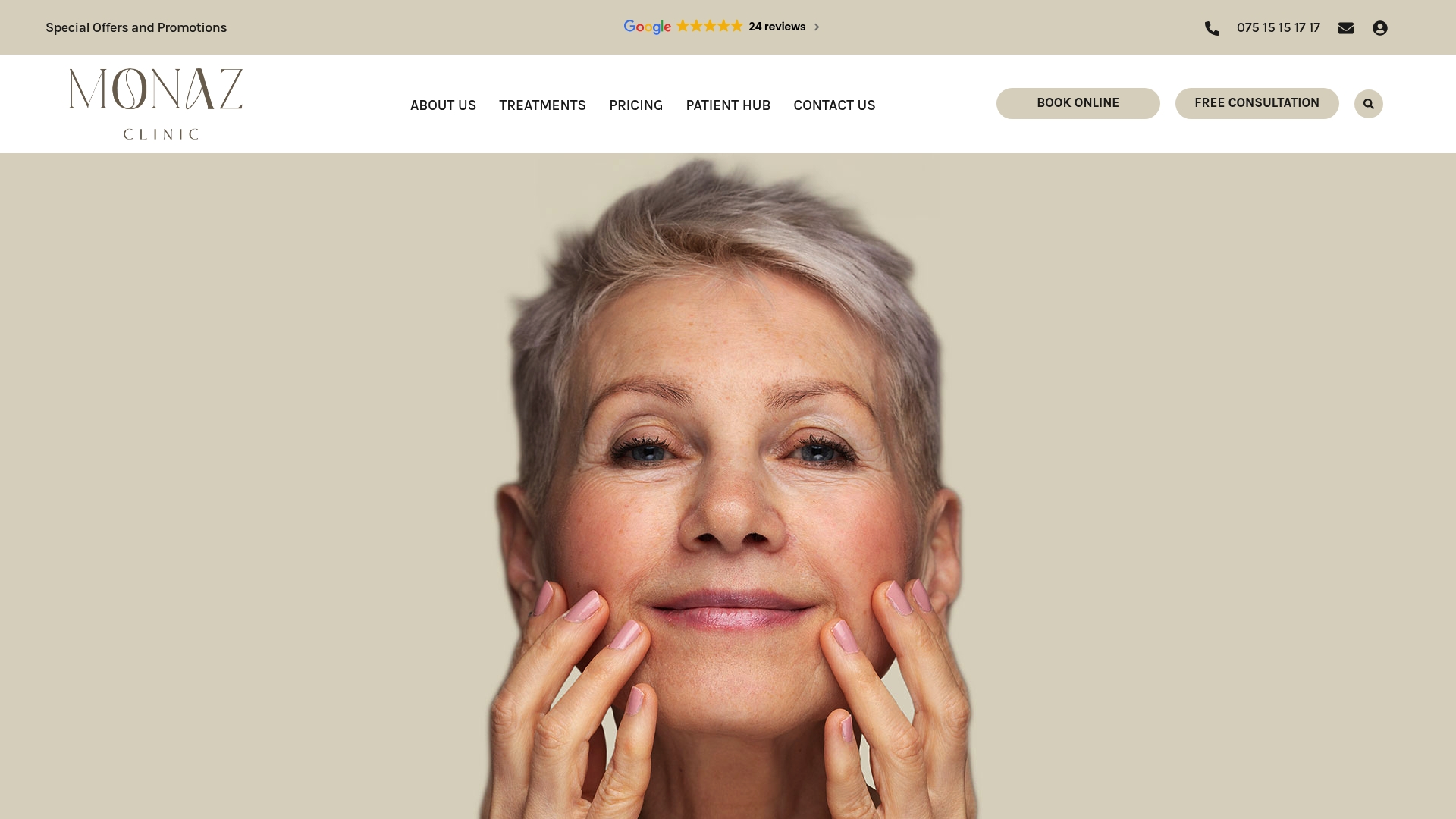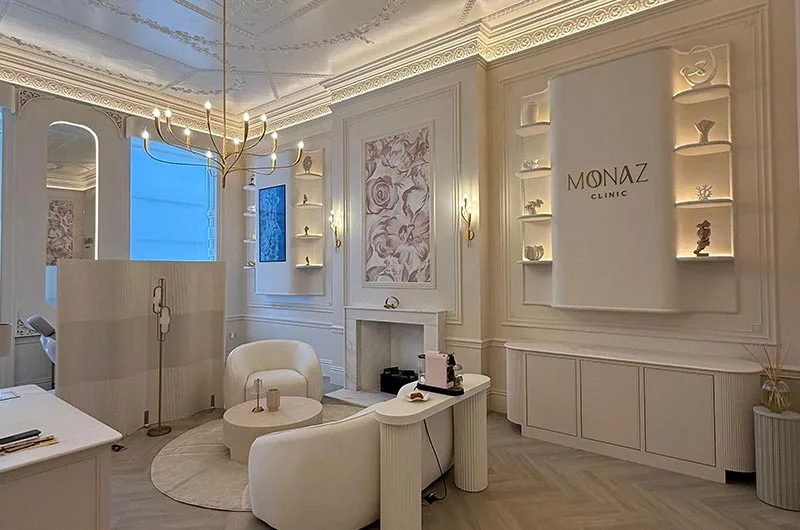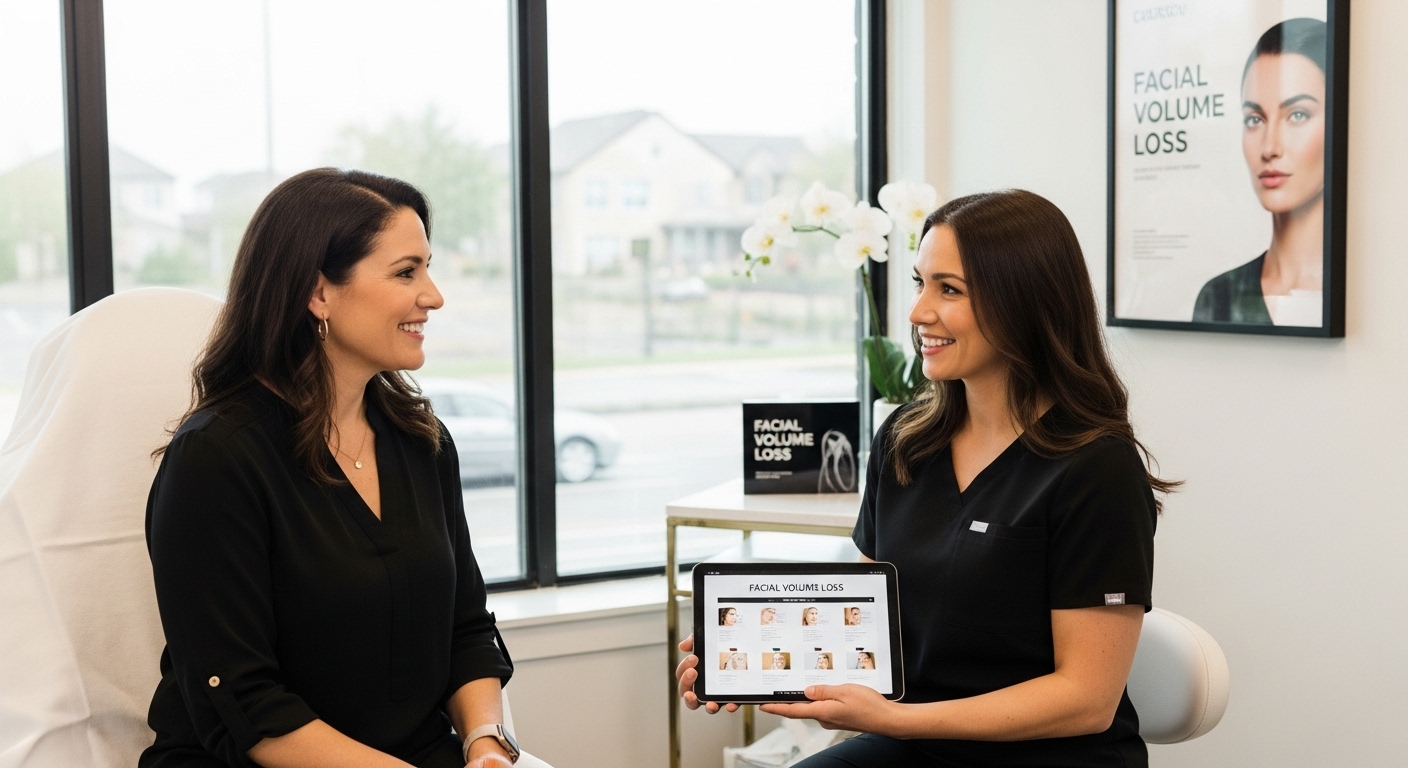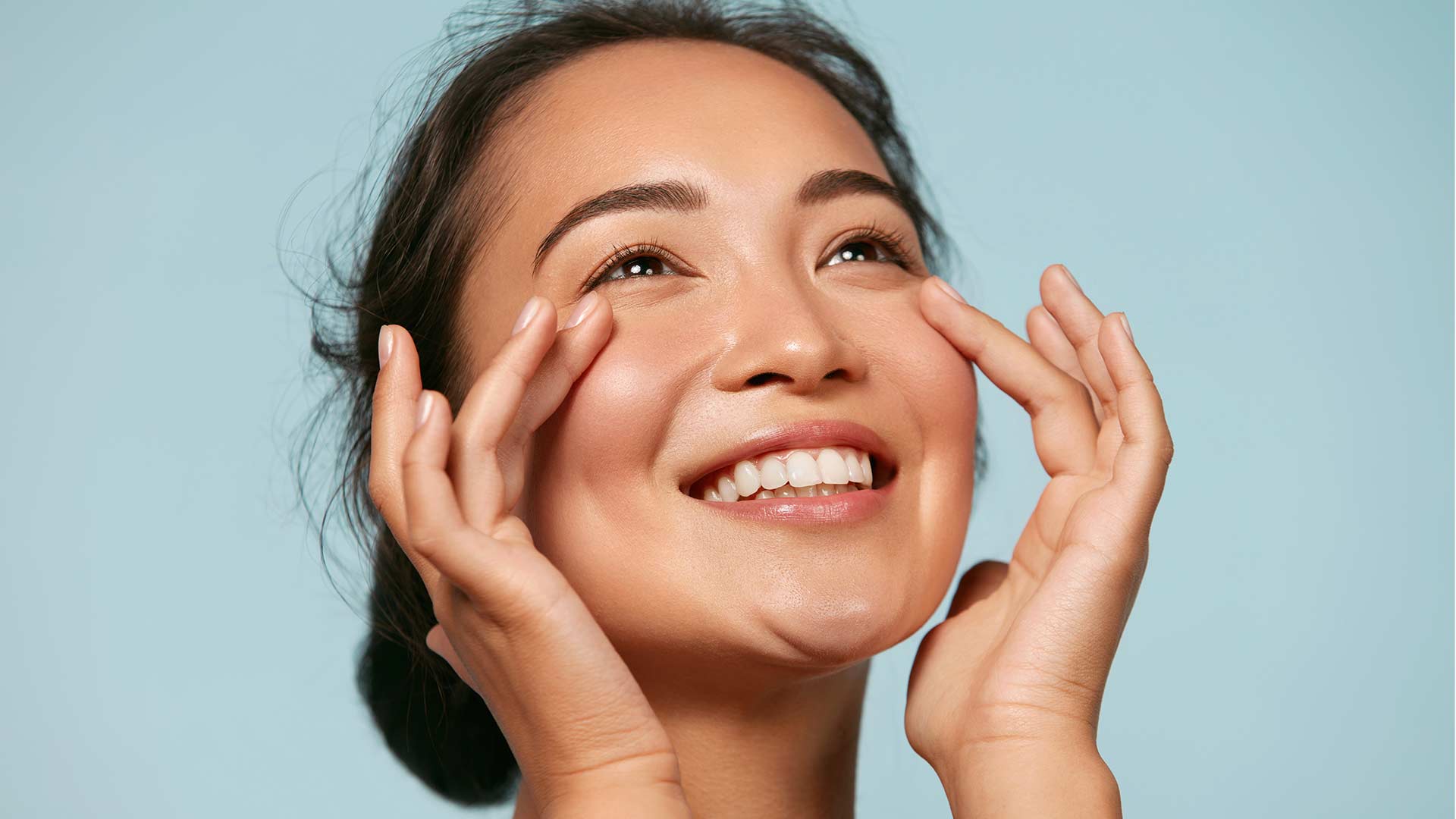Explore facial volume loss solutions for enhancing aesthetics, understanding key concepts and the importance behind these solutions.
Facial volume loss changes the way our faces look and age, affecting self-confidence and how others perceive us. Here is something not everyone knows. Collagen and elastin production can dramatically decrease as we get older, making cheeks hollow and smoothing away natural contours. This is not just about vanity. These shifts carry real psychological impact and can deeply influence how we feel and relate to the world around us.
Table of Contents
- What Is Facial Volume Loss And Why It Matters?
- Understanding The Causes Of Facial Volume Loss
- How Facial Volume Loss Solutions Work
- Exploring Different Treatment Options For Facial Volume Loss
- The Impact Of Facial Volume On Aesthetic Perceptions
Quick Summary
| Takeaway | Explanation |
|---|---|
| Facial volume loss affects aesthetics significantly. | This loss results from age-related biological changes, impacting appearance and self-perception. |
| Intrinsic and extrinsic factors cause volume loss. | Aging processes and environmental factors like sun exposure, poor diet, and stress contribute to the reduction in facial volume. |
| Sophisticated treatments can restore facial volume. | Aesthetic medicine offers personalised solutions such as dermal fillers to address and rejuvenate facial contours effectively. |
| Facial volume influences social perceptions and confidence. | Balanced facial volume is associated with youthfulness and health, affecting how individuals are viewed in social interactions. |
| Understanding volume loss empowers proactive measures. | Recognising the causes of volume loss enables individuals to adopt strategies for prevention and aesthetic enhancement. |
What is Facial Volume Loss and Why It Matters?
Facial volume loss represents a natural yet complex biological process where facial tissues gradually diminish in volume and structural support, significantly impacting overall aesthetic appearance. Understanding this biological transformation becomes crucial for individuals seeking to maintain a youthful and vibrant complexion.
The Biological Mechanics of Volume Reduction
The human face undergoes substantial structural changes as we age. Collagen and elastin production decreases, fat compartments shrink, and bone density reduces, creating a cascading effect of volume depletion. These transformations manifest through visible signs such as:
- Hollowing around the cheeks
- Deepening of facial lines and wrinkles
- Sagging skin and reduced facial contours
- Diminished skin elasticity
According to research from the National Institutes of Health, these volume changes are not merely cosmetic but represent complex physiological processes involving multiple tissue layers.
Psychological and Aesthetic Implications
Beyond physical transformations, facial volume loss carries significant psychological implications. Individuals experiencing noticeable changes may encounter reduced self-confidence and heightened self-consciousness. The visual representation of aging can profoundly impact personal perception and social interactions.
Recognising these changes allows for proactive aesthetic strategies, enabling individuals to address volume loss through scientifically supported interventions that restore facial harmony and rejuvenate natural contours. Modern aesthetic medicine offers sophisticated solutions designed to counteract these biological shifts, providing personalised approaches to maintaining facial vitality and youthful appearance.
Understanding the Causes of Facial Volume Loss
Facial volume loss emerges from a complex interplay of intrinsic and extrinsic factors that systematically transform facial structure and tissue composition. Learn about advanced aesthetic solutions that address these underlying changes with precision and expertise.
Biological Aging Mechanisms
Intrinsic aging represents the primary driver of facial volume reduction. As the body ages, critical physiological processes undergo significant transformation. Collagen and elastin production dramatically decreases, leading to reduced skin elasticity and structural integrity. Simultaneously, facial fat compartments begin to atrophy, causing a gradual loss of volume and support.
According to research from the National Institutes of Health, these biological changes manifest through several key mechanisms:
- Reduced cellular regeneration capacity
- Diminishing hormone production
- Decreased metabolic efficiency
- Progressive bone density reduction
Environmental and Lifestyle Influences
External factors play an equally significant role in accelerating facial volume loss. Ultraviolet radiation exposure, poor nutritional habits, chronic stress, and lifestyle choices substantially impact tissue degradation. Smoking, for instance, introduces toxins that rapidly accelerate collagen breakdown and impair skin regeneration processes.
Key environmental contributors include:
- Prolonged sun exposure without protection
- High-stress urban environments
- Inadequate sleep and recovery periods
- Poor dietary nutrition
- Limited physical activity
Understanding these multifaceted causes empowers individuals to develop comprehensive strategies for mitigating facial volume loss, combining preventative care with sophisticated aesthetic interventions that restore and rejuvenate natural facial contours.
How Facial Volume Loss Solutions Work
Facial volume loss solutions represent sophisticated aesthetic interventions designed to restore and enhance natural facial structure through targeted techniques. Learn about our comprehensive dermal filler treatments that provide nuanced, personalised rejuvenation approaches.
Scientific Principles of Volume Restoration
Modern aesthetic medicine employs advanced techniques that strategically replenish lost facial volume by introducing biocompatible substances into precise anatomical layers. These interventions work by mimicking the body’s natural structural components, effectively counteracting age-related tissue depletion.
According to research from the National Institutes of Health, dermal fillers function through several key mechanisms:
- Direct volume replacement in targeted facial regions
- Stimulation of collagen production
- Hydration and tissue support enhancement
- Structural remodelling of facial contours
Targeted Intervention Strategies
Facial volume loss solutions utilise different approaches depending on individual anatomical requirements. Practitioners assess specific volume deficits and select appropriate intervention methods, which might include:
- Hyaluronic acid-based dermal fillers
- Calcium hydroxylapatite injections
- Poly-L-lactic acid treatments
- Autologous fat transfer techniques
Each method offers unique benefits, targeting specific tissue layers and providing customised aesthetic outcomes.
The precision of these interventions allows for subtle yet transformative improvements in facial harmony and youthful appearance, addressing volume loss with scientific accuracy and artistic sensitivity.
Exploring Different Treatment Options for Facial Volume Loss
Facial volume loss treatments have evolved significantly, offering sophisticated and personalised solutions that address individual aesthetic requirements. Discover our comprehensive non-invasive treatment approaches designed to restore natural facial harmony.
Non-Surgical Dermal Filler Interventions
Contemporary aesthetic medicine prioritises minimally invasive techniques that provide immediate and sustainable volume restoration. These treatments involve carefully selected injectable substances strategically placed to replenish lost facial volume and enhance natural contours.
According to research from the National Health Service, dermal filler treatments offer several key advantages:
- Minimal recovery time
- Immediate visible results
- Customisable treatment plans
- Reversible and adjustable outcomes
Advanced Treatment Modalities
Different facial volume loss treatments cater to varied aesthetic needs and individual physiological characteristics. Practitioners employ a nuanced approach, selecting from multiple intervention strategies:
- Hyaluronic acid fillers for immediate volume
- Poly-L-lactic acid for gradual collagen stimulation
- Calcium hydroxylapatite for deeper tissue support
- Autologous fat transfer for natural regeneration
These innovative techniques not only address volume loss but also stimulate the body’s intrinsic regenerative processes, providing comprehensive facial rejuvenation that respects individual anatomical uniqueness.
Below is a comparison table highlighting the main non-surgical dermal filler types and advanced treatment modalities for facial volume loss, their constituents, benefits, and typical outcomes.
| Treatment Type | Main Component | Primary Benefit | Outcome Type |
|---|---|---|---|
| Hyaluronic Acid Fillers | Hyaluronic acid | Immediate volume boost | Immediate, reversible |
| Calcium Hydroxylapatite | Calcium hydroxylapatite | Deep tissue support | Immediate, semi-permanent |
| Poly-L-lactic Acid | Poly-L-lactic acid | Gradual collagen stimulation | Progressive improvement |
| Autologous Fat Transfer | Patient’s own fat | Natural regeneration | Gradual, long-lasting |
![]()
The Impact of Facial Volume on Aesthetic Perceptions
Facial volume represents more than a physical attribute. It is a fundamental component of aesthetic perception that significantly influences how individuals are perceived and interpreted in social interactions. Volume acts as a crucial determinant of youth, vitality, and emotional expression.
Psychological Dimensions of Facial Fullness
The human brain processes facial volume as an instantaneous indicator of health, age, and emotional state. Subtle changes in facial contours communicate complex psychological signals, revealing intricate narratives about an individual’s wellbeing and emotional landscape.
According to research published in psychological aesthetic studies, facial volume impacts social perception through several critical mechanisms:
- Immediate assessment of biological age
- Interpretation of emotional availability
- Perception of overall health and vitality
- Subconscious evaluation of genetic fitness
Aesthetic and Social Implications
Facial volume transcends mere physical appearance, functioning as a sophisticated communication platform. Balanced and harmonious facial volumes suggest psychological and physiological wellness. Individuals with optimal facial volume are frequently perceived as:
- More approachable and trustworthy
- Perceived as energetic and vibrant
- Exhibiting higher social confidence
- Appearing more emotionally stable
These nuanced perceptual dynamics underscore the profound significance of facial volume in human social interactions, revealing how aesthetic attributes deeply intertwine with psychological and emotional experiences.

Restore Confidence with Personalised Facial Volume Solutions
Have you noticed hollowing in your cheeks or a loss of facial fullness that subtlety changes your reflection? Facial volume loss can deeply affect your self-confidence and the way you present yourself to the world. This article explored how shifts in collagen, fat, and bone density create visible changes and why addressing these signs early helps you preserve a naturally youthful appearance. If you are seeking proven ways to reverse these changes through safe and expert care, you are not alone. Visit our tips section for practical advice on maintaining your skin’s vitality and understanding the best non-surgical solutions suited to your needs.

Let our award-winning team at Monaz Clinic guide you on your path to rejuvenation. Book your complimentary consultation today and experience the care, medical expertise, and artistry that set us apart. Take the first step toward revealing your best self now. Learn more about our approach and start your bespoke journey here.
Frequently Asked Questions
What causes facial volume loss?
Facial volume loss is primarily caused by intrinsic aging, which includes a decrease in collagen and elastin production, atrophy of facial fat compartments, and reductions in bone density. Environmental factors such as UV exposure, smoking, and poor nutrition also contribute significantly to this condition.
How do dermal fillers restore facial volume?
Dermal fillers restore facial volume by injecting biocompatible substances into targeted facial regions. These fillers provide immediate volume replacement, stimulate collagen production, and enhance hydration, effectively mimicking the body’s natural structural components.
Are there non-surgical options for addressing facial volume loss?
Yes, there are several non-surgical options for addressing facial volume loss, including various types of dermal fillers like hyaluronic acid, calcium hydroxylapatite, and poly-L-lactic acid. These treatments are minimally invasive and offer immediate results with minimal recovery time.
What are the psychological impacts of facial volume loss?
Facial volume loss can significantly affect an individual’s self-esteem and psychological well-being. It may lead to reduced self-confidence and increased self-consciousness, as changes in facial appearance are often linked to perceptions of health, age, and emotional state.





